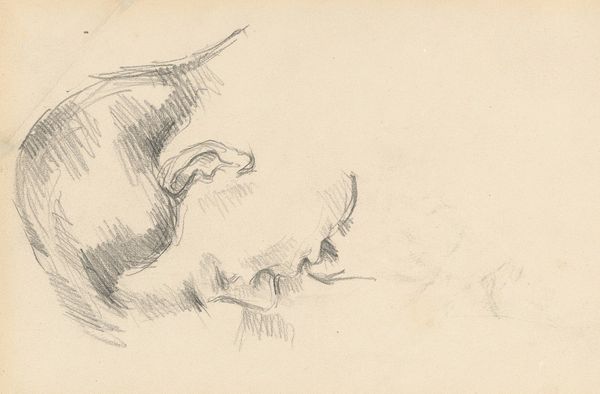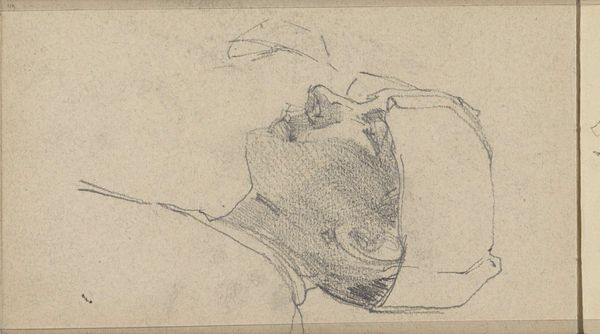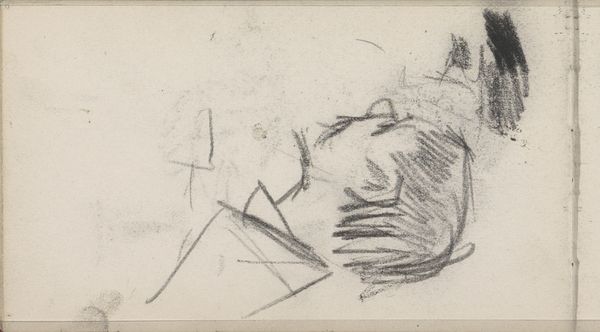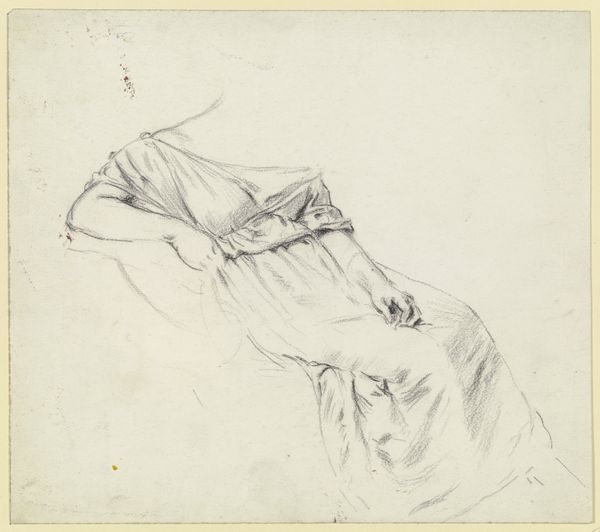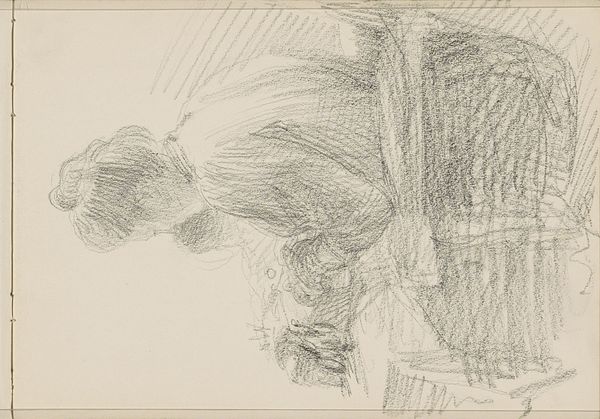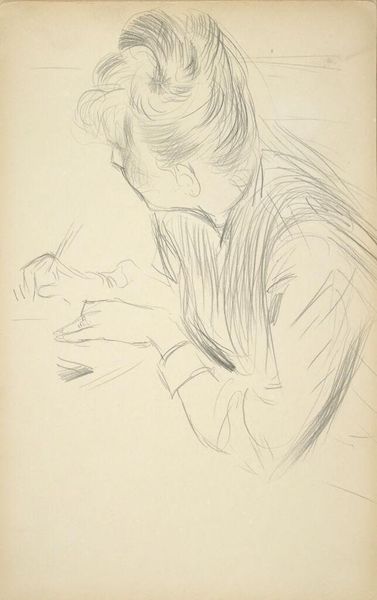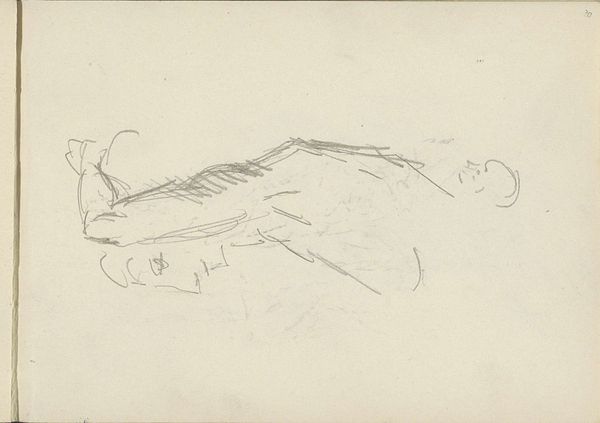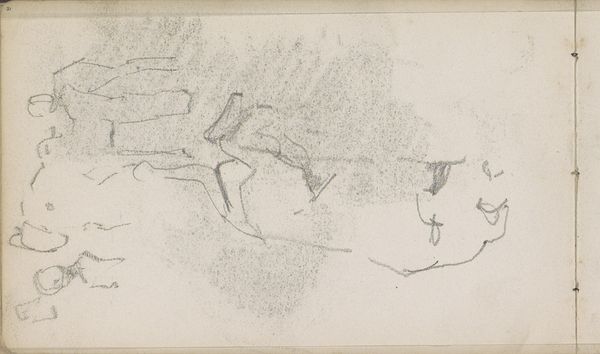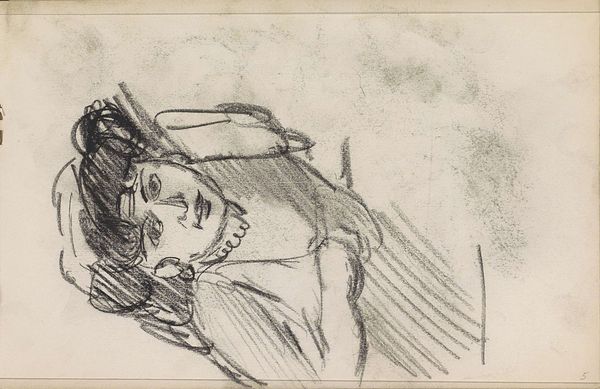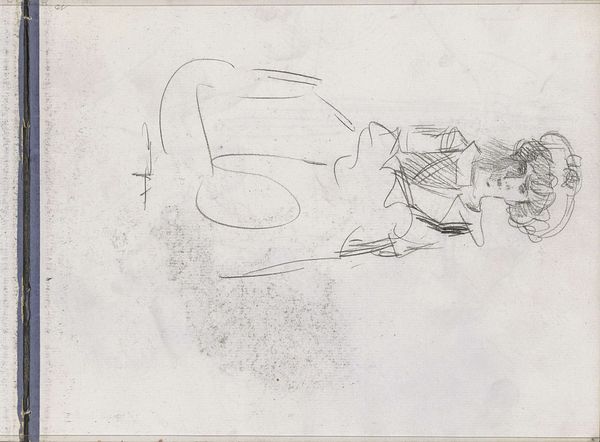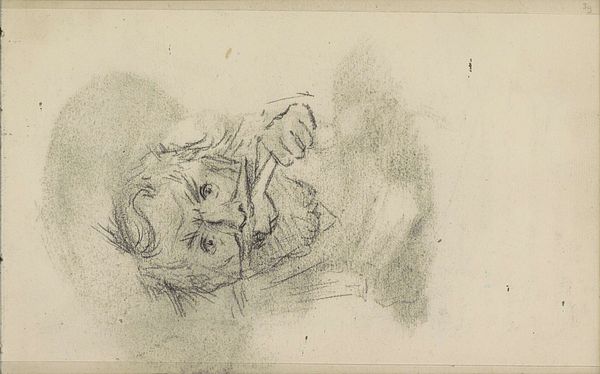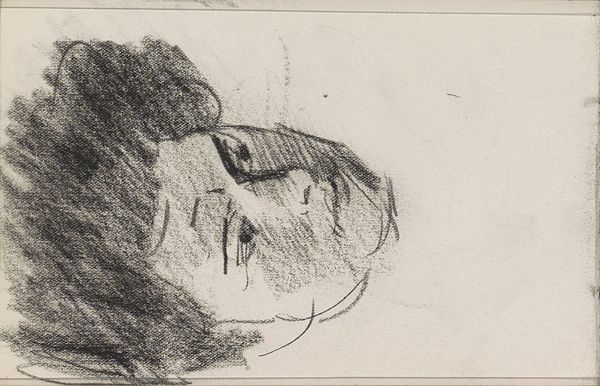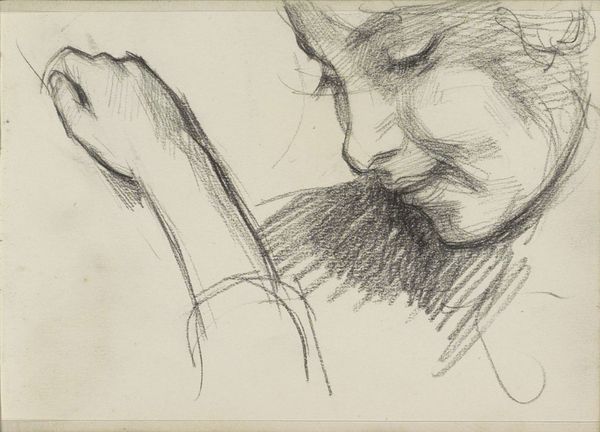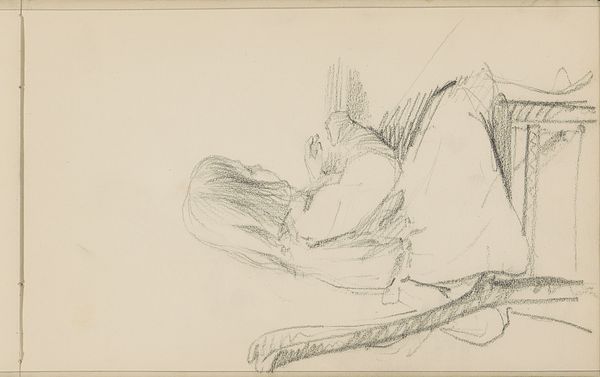
drawing
#
drawing
#
amateur sketch
#
light pencil work
#
pencil sketch
#
personal sketchbook
#
idea generation sketch
#
ink drawing experimentation
#
pen-ink sketch
#
sketchbook drawing
#
pencil work
#
sketchbook art
Copyright: Public Domain: Artvee
Curator: We are looking at "Hand and Shoulder of a Boy" a graphite drawing from around 1885 by Paul Cezanne. What strikes you initially about this sketch? Editor: There is something intimate and raw in this glimpse. The figure appears almost burdened, face obscured by hand. It suggests a vulnerability. Curator: I see it, and Cezanne's consistent return to working-class subjects – like this young person whose gender identity is not clearly stated -- does hint at that. He elevates them to a space of contemplative study. Editor: The motif of hands cradling the face resonates with deep historical echoes: poses of grief, contemplation, maybe even shame or weariness, visible in countless images through the centuries. What did the hand symbolize to Cezanne? Curator: Cezanne challenged conventional class boundaries within the Salon system, inviting considerations of power dynamics and spectatorship within artistic spaces. Who had the right to be viewed, represented? Whose stories held value? Editor: These obscured facial features lead me to think about masking or hidden narratives. I’m struck by the contrast between the very defined strong hand and how we're not allowed to see more. Curator: It speaks to a common thread in Cezanne's work - his discomfort with representing the totality of identity, leaving space for interpretation of the individual. He lets us look without completely revealing. Editor: Looking closer at his technique—the visible lines, the smudging. It's not about capturing perfection but communicating something more honest about experience. Almost like glimpsing an authentic moment, free from posing. Curator: Exactly. These intentional gaps are so crucial to post-impressionistic strategies of defamiliarization. That act asks the viewer to fill them and forces them to grapple with assumptions they project. Editor: A work seemingly small offers depths once we stop expecting everything to be simply laid out for us. It evokes emotion indirectly, relying instead on universally recognizable gestures. Curator: Indeed. It invites critical thought on representation and lived experience that are ever pertinent. Editor: It leaves me pondering how even preliminary sketches can unlock complex worlds, provided we observe with intention.
Comments
No comments
Be the first to comment and join the conversation on the ultimate creative platform.
